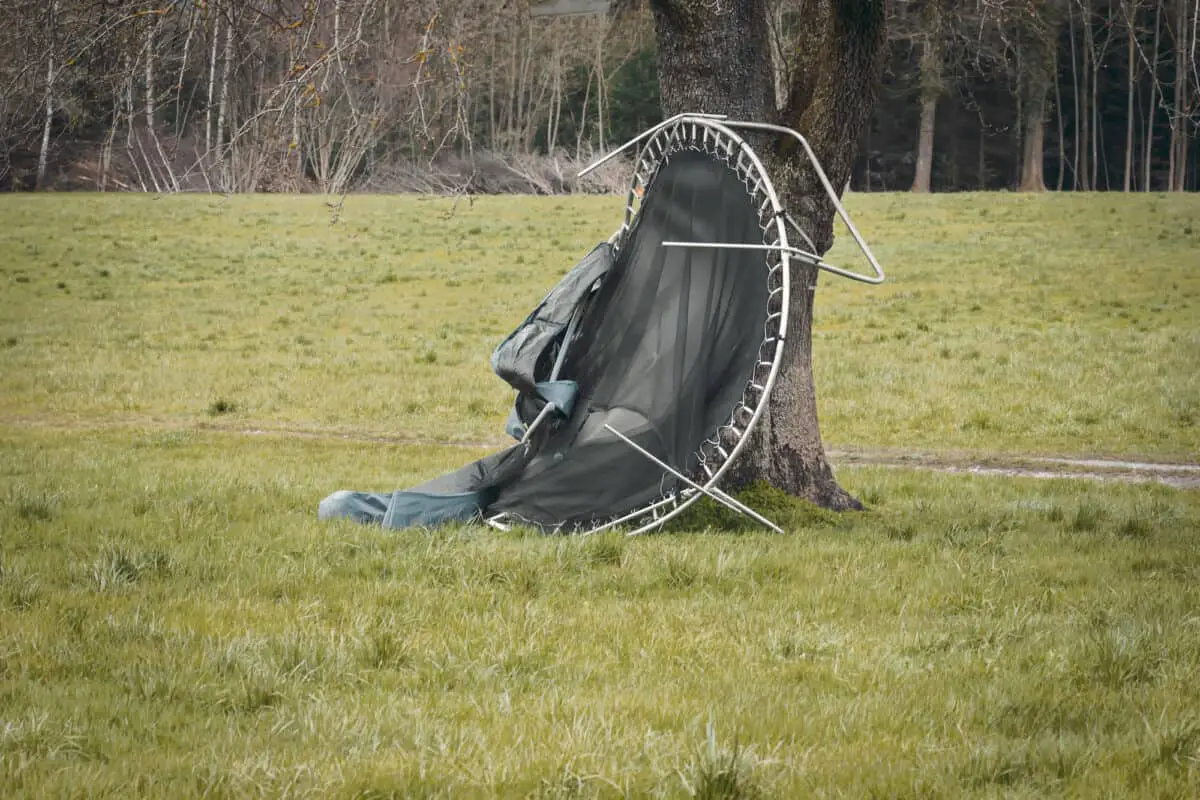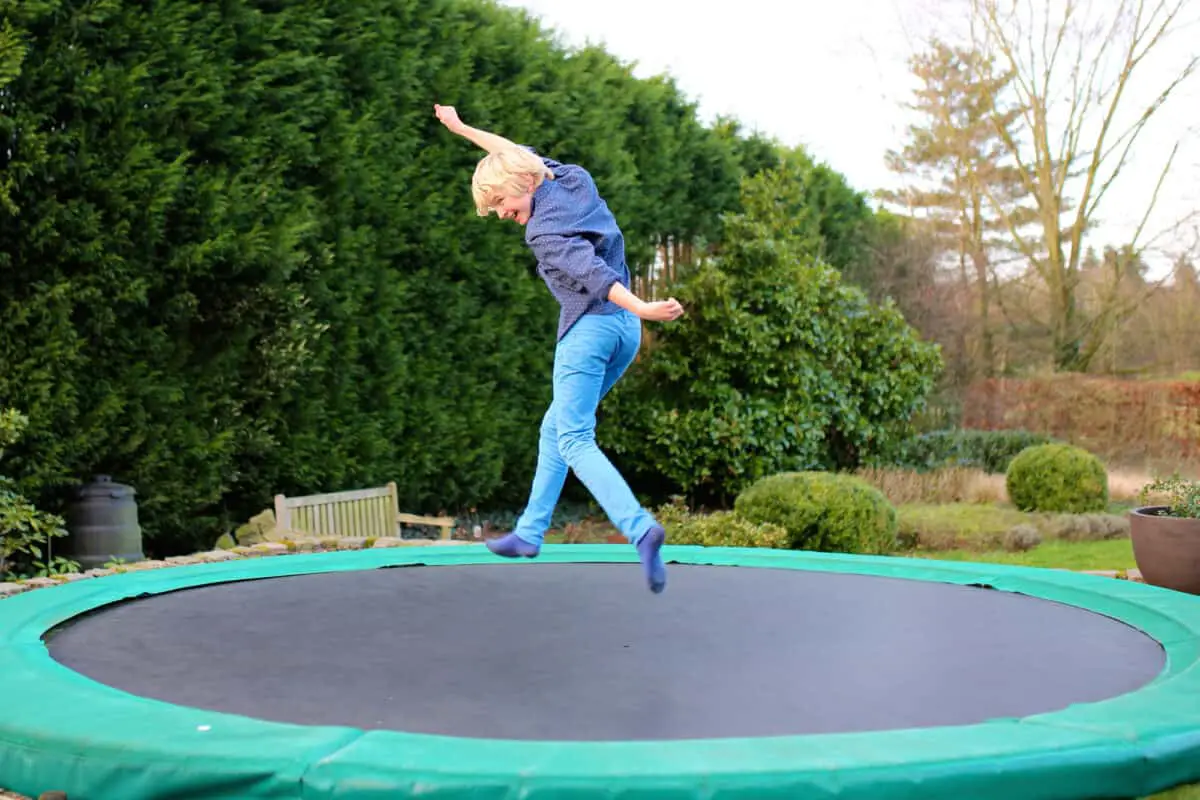Jumping on a trampoline can be an enjoyable way to have fun, exercise, and boost adrenaline, but should trampolines be banned? Trampolines are a way for families to get exercise, spend quality family time, and receive health benefits.
Trampoline jumping has been shown to provide improvements to cardiovascular health, coordination, and balance. It can help jumpers build endurance as well as relieve stress and improve mood.
It has also been shown to improve the strength of bones and encourage the healthy flow of lymph fluid throughout all parts of the body.
Jumping, or rebounding as it is sometimes referred to, is an aerobic exercise that is enjoyable for jumpers of all ages.
Although trampolining can be an intense exercise, the springy jumping surface cushions jumpers and is gentler on joints than jumping on a hard surface. It is a much lower impact than jumping rope or running.

Disagreement on the Safety of Trampolines
There are people and organizations on both sides of the debate about the safety of recreational trampoline use on whether or not should trampolines be banned.
However, most pediatric and orthopedic doctors and medical associations caution against the use of trampolines for recreational use.
Many of the reasons that jumping on a trampoline is so fun are the same reasons that lead to common injuries received on them. According to the American Academy of Pediatrics, they agree that trampolines be banned for recreational use.
This has been the position of the organization since 1977 and emphasizes the common injuries that occur while using a trampoline.
Common injuries that are seen from trampoline use are burns, scrapes, sprains, fractures, and dislocations. More severe injuries can include neck, head, or spinal injuries.
Head and neck injuries comprise more than 10 percent of trampoline injuries. In the journal, Pediatrics, it has been noted that permanent neurological damage happens in 1 out of every 200 injuries that are received on a trampoline.
More than one-third of trampoline injuries are to children under the age of six. Most trampolines on the market are designed for children over six years old. The American Academy of Pediatrics strongly discourages the recreational home use of trampolines for all, but particularly for children younger than six where the trampolines be banned.
The reason for this is that small children are not as coordinated as older children. They receive most of the head injuries because they land on their heads more often.
Young children’s heads are proportionally larger than their body, this causes them to be top-heavy, and fall over more easily than older jumpers.
Common Injuries from Trampolining
Although jumping on trampolines can be a fun and enjoyable time, landing wrong or falling can contribute to injuries, which may be minor or serious, which could lead to permanent injuries.
According to doctors and safety experts, the use of trampolines contributes to thousands of injuries each year. Approximately 100,000 people are seen in emergency rooms across the country each year, mostly children.
It is relatively easy to be injured while jumping on a trampoline. However, there are various safety precautions and measures that can be taken to limit the number and extent of injuries. Injuries can occur even when the trampoline has a high-quality net and padding.
What are some injuries that are commonly received on a trampoline?
Burns, scrapes and lacerations are some of the most common injuries received while jumping on a trampoline. When children are jumping on a trampoline they may accidentally land on the frame or springs, which can result in cuts, scrapes, or burns similar to rug burns.
Most of these injuries are minor but can be more severe depending on the location of the scrape or cut.
More serious injuries can also include sprains and broken bones. Since children’s bodies are still growing and developing, it is much more common for them to injure themselves while jumping on a trampoline. In part, this is due to children not being able to control their jumping.
Children below the age of 16 are more likely to receive sprains and breaks in comparison to older jumpers whose bodies are fully developed.
Sprains often occur when very high jumping happens on a trampoline. The most common sprains occur to ankles. It is hard for people, especially children, to land on the jumping surface evenly.
Often, sprains or breaks happen when attempting stunts or tricks like rolls, somersaults, high jumps, or flips. The most common broken bones are ankles, feet, legs, arms, and wrists. More seriously, are broken necks and backs.
Neck and head injuries commonly occur when people hit his or her head on a nearby object such as a tree or rock after falling off of a trampoline. Often, jumpers receive a head or neck injury from falling on a spring, colliding with the frame, or impacting another jumper.
A head injury can lead to a concussion, which should be taken seriously. Any head injury should be taken extremely seriously, and a medical professional should be seen.
Neck injuries can be severe, and may also cause spinal injuries which could result in permanent damage including paralysis, and even death in the most severe situations.

Trampoline Safety Precautions
Jumping on a trampoline always carries a risk. The American Academy of Pediatrics strongly discourages home, recreational use of trampolines suggesting trampolines be banned from this environment.
However, with proper safety measures in place, families who do choose to use a trampoline at home can enjoy a safer jumping experience.
Safety nets and pads should always be installed before using a trampoline. The trampoline’s frame, springs, and all landing surfaces should be padded and enclosed with quality pads and netting. Families looking to purchase a recreational home trampoline should choose one that comes with a high-quality net enclosure, and pads.
Or, if not included, they should be purchased at the same time, from the same manufacturer.
A trampoline should be placed on level ground. This will help the trampoline be more stable, and lessen the chances of someone falling off of the trampoline due to it being placed on ground that is not level.
The location of the trampoline should also be taken into consideration. The trampoline should be placed a safe distance from trees, poles, fences, corners of buildings, and other objects that may contribute to an injury.
Jumpers should not be allowed on the trampoline without supervision. Children should never be allowed to jump on a trampoline unsupervised. Children under the age of six should not be allowed to jump on a trampoline.
Young children comprise many of the injuries seen in emergency rooms. All jumpers should not attempt tricks and stunts, and only one jumper should be allowed on the trampoline at any one time.
Trampoline owners should also make sure to do safety checks on all parts of the trampoline on a regular basis. Netting, pads, the jumping surface, and the frame should be examined frequently for holes, tears, and damage from the elements.
Final Thoughts on Should Trampolines Be Banned
Trampolines provide a fun way to exercise and get fresh air, all at home. With more time than ever spent at home, a trampoline can help families experience quality outdoor exercise time, all in a convenient location. However, it can be dangerous, especially for young children.
Despite the cautions from medical professionals, many families decide that the benefits outweigh the dangers. To keep trampoline jumping as safe as possible, all safety precautions should be taken, and safety equipment should be put in place.
High-quality trampoline netting, cushiony padding, and safety recommendations should be followed.
